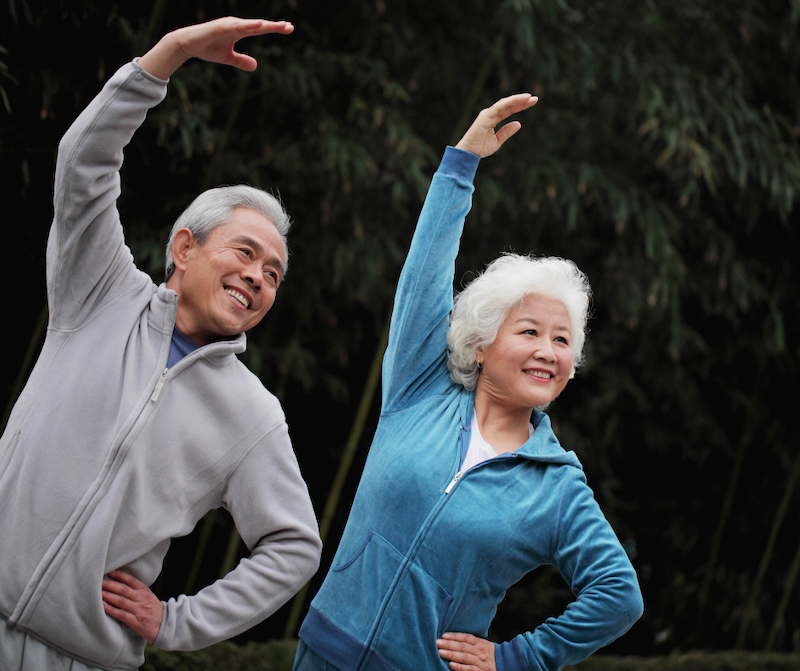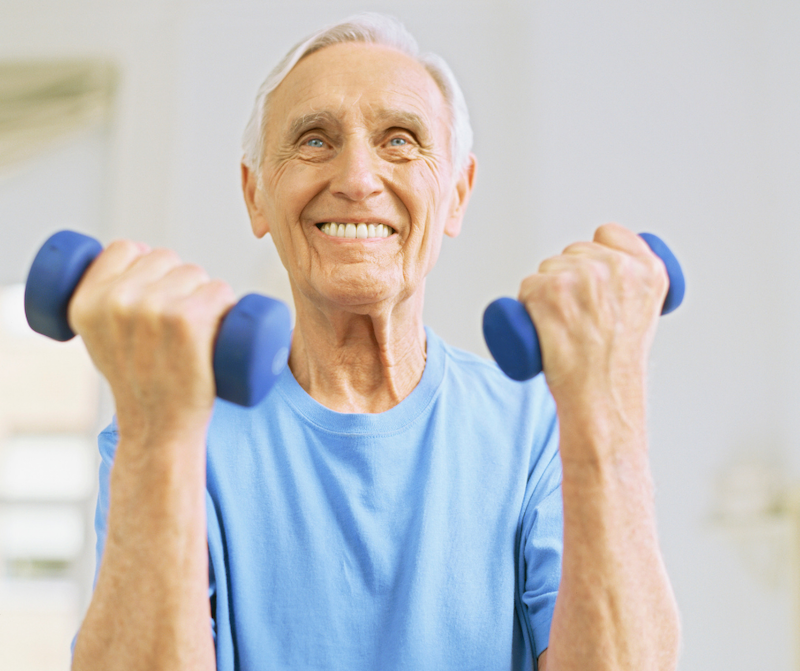Best Exercises for Seniors
Regular exercise is important for all stages of life, but as we age it becomes even more vital to our overall well-being. Regular exercise can improve almost all aspects of your health including; blood pressure, body weight, cholesterol levels, overall mood and sleep patterns. It strengthens your muscles, ligaments, tendons and your bones to help reduce injury and reduce your risk of falling. As always, anytime you are beginning a new exercise program, increasing your activity or if you have a chronic health condition, you should speak with your doctor about what is best for you. Some exercises or stretches may need to be modified to best fit your personal needs and goals.
There are several types of exercise to choose from and enjoying a nice mix of them all will result in the greatest results.
Flexibility & Stretching (Dynamic and static)
Do your muscles feel tight? Stretching and improved flexibility will help you feel less stiff and help you feel more comfortable with everyday tasks such as; walking, bending and reaching. By gaining flexibility, you will naturally improve your posture, your circulation and your balance. Gaining flexibility takes time. Listen to your body and begin slowly.
To begin, let’s start by discussing the two types of stretching: dynamic & static. Dynamic stretching, otherwise known as active stretching, is less of what you think about as “stretching.” These are the types of movement and motions you do to warm up before exercise. It will include movements similar to those that will be included in your exercise to ensure those muscles are warm and the joints are lubricated.
Dynamic stretching includes stretches such as these:
- Squats
- Torso Rotations
- Arm Circles
- Walking Lunges
- Shoulder Squeeze
Static stretching is what will increase flexibility. These are the stretches that you hold for a period of time. Static stretching should not hurt but should be challenging. With static stretching, you will focus on one muscle or area at a time such as; neck, calves, hamstrings, back, arms & shoulders.

Balance
Along with stretching & flexibility, improving balance may help prevent falls and other injuries. The Centers for Disease Control and Prevention (CDC) reports that every year, about 2.5 million older American adults are treated for injuries resulting from falls. As we age vision difficulties, inner ear issues, and weakened joints and muscles can cause a lack of balance with even a slightly uneven surface. Activities such as yoga, tai chi and Pilates will help improve balance & flexibility. As an added bonus, many of these exercise activities are also good for our physiological wellbeing as well.
Aerobic Endurance
This type of exercise does not need to be strenuous but must increase your heart rate. There is no need to sign up for the next hometown marathon! For most seniors, beginning with low-impact activities is a great start. The Centers for Disease Control and Prevention (CDC) recommends at least 150 minutes of moderate-intensity aerobic activity each week. (Or 75 minutes of vigorous-intensity aerobic activity.) Look for senior classes in your area, or just enjoy a walk in a local park. Some aerobic exercise may include:
Strength Training
The words "strength training" may bring to mind visions of bodybuilders and large barbells. But the truth is, everyday activities require strength. Carrying groceries inside, climbing stairs and house chores all require adequate muscle strength. For adults 65 years and older, strength training should be included in your workouts at least twice a week, according to The Centers for Disease Control and Prevention (CDC). Start slow with light weights, such as 1-2 pound weights and aim for 10-15 repetitions of a mixed variety of exercises. You can also use your own body weight for resistance with exercises such as chair squats, wall pushups or even stair climbing. Resistance bands are also a very affordable way to add strength training to your workouts and improve cardiovascular health, bone health, independence and overall quality of life. Classes offered by your insurance, such as Silver Sneakers, or at your local gym may help you learn the proper way to use strength training equipment.

Improving your health can begin with as little as 30 minutes of physical activity every day. Remember to speak to your doctor about the best path to fitness for your needs and begin slowly. Try to include all types of exercise in your weekly routine to see the greatest benefit. The U.S. Department of Health and Human Services reports that less than 5% of adults participate in 30 minutes of physical activity every day and only 1 in 3 reach the recommended amount of physical activity each week. But it’s not too late! A study in the Journal of Medicine and Science in Sports and Exercise reported that lifting weights for less than one hour each week, showed a significantly lowered risk of heart attack and stroke.
Get Moving! Even small steps can make a difference!
Want more fun and informative content? Be sure to follow us on Facebook, Instagram and check our Blogs page often.
Written By: S. Campbell for Access Health Care Physicians, LLC.
- Walking
- Cycling
- Swimming & Water Aerobics
- Dancing
- Tai Chi


